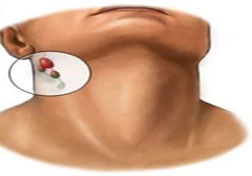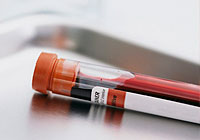Deciphering analyzes for Epstein-Barra virus, which methods detect the pathogen, their essence and evaluation of the results of the study.
Content
Analyzes for Epstein-Barra virus

Epstein-Barra virus — This is the pathogen of infectious mononucleosis. Reveal it with a polymerase chain reaction and enzyme immunoassay.
Polymerase chain reaction
PCR analysis is to process the material taken in a special reactor (amplifier), in which a multiple increase in the DNA of the pathogen occurs.
For the study, the patient take venous blood. The results obtained are interpreted on the principle of trigger — «detected / not detected». This method allows you to find out whether there is a virus in the blood.
Linked immunosorbent assay
In enimuno-immunimal analysis, it is possible not only to determine the presence of infection, but also to know its type — Acute, chronic or carriage.
Blood serves material for research.
This method identifies several types of antibodies to the virus and their concentration:
- Immunoglobulins M to capsid antigen. Received at the early stage of infectious mononucleosis. Their presence in the blood speaks about acute infection. Antibodies disappear from the body in a month and a half after the start of the disease;
- Immunoglobulins G to capsid antigen. Appear immediately after immunoglobulin m and also indicate an acute infection. Persisted life;
- Immunoglobulins G to early antigens. Appear in the blood in the first weeks of the disease and disappear up to half a year. Indicate an acute infection;
- Immunoglobulins G to the virus nuclear antigen. These antibodies are detected in blood in chronic infection and asymptomatic carrier. In the acute period they are missing.
The concentration of each of these antibodies exceeding 1,1 is a sign of the presence of a virus in the material under study.
Direction for analysis gives an infectious player, oncologist or doctor of the family planning cabinet.









